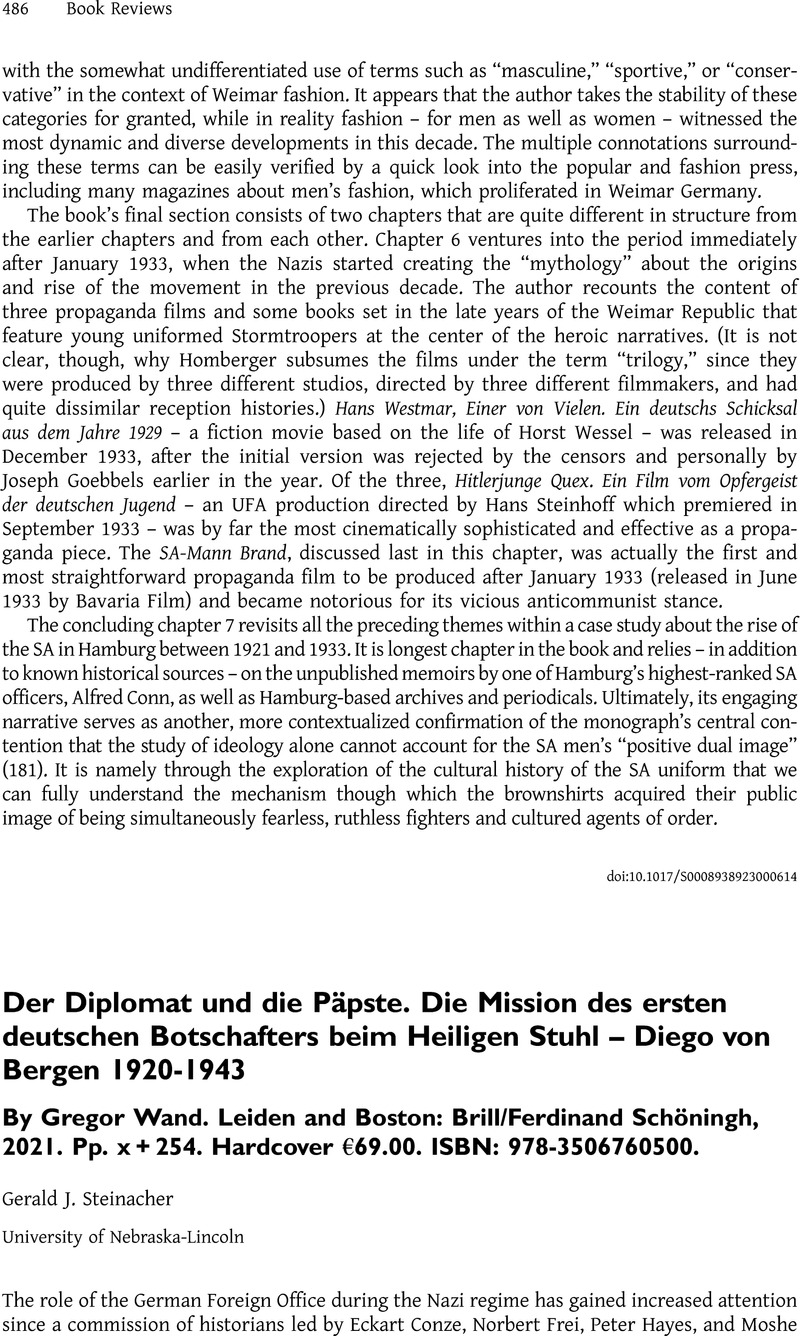No CrossRef data available.
Article contents
Der Diplomat und die Päpste. Die Mission des ersten deutschen Botschafters beim Heiligen Stuhl – Diego von Bergen 1920-1943 By Gregor Wand. Leiden and Boston: Brill/Ferdinand Schöningh, 2021. Pp. x + 254. Hardcover €69.00. ISBN: 978-3506760500.
Review products
Der Diplomat und die Päpste. Die Mission des ersten deutschen Botschafters beim Heiligen Stuhl – Diego von Bergen 1920-1943 By Gregor Wand. Leiden and Boston: Brill/Ferdinand Schöningh, 2021. Pp. x + 254. Hardcover €69.00. ISBN: 978-3506760500.
Published online by Cambridge University Press: 08 November 2023
Abstract
An abstract is not available for this content so a preview has been provided. Please use the Get access link above for information on how to access this content.

- Type
- Book Review
- Information
- Copyright
- Copyright © The Author(s), 2023. Published by Cambridge University Press on behalf of Central European History Society of the American Historical Association


